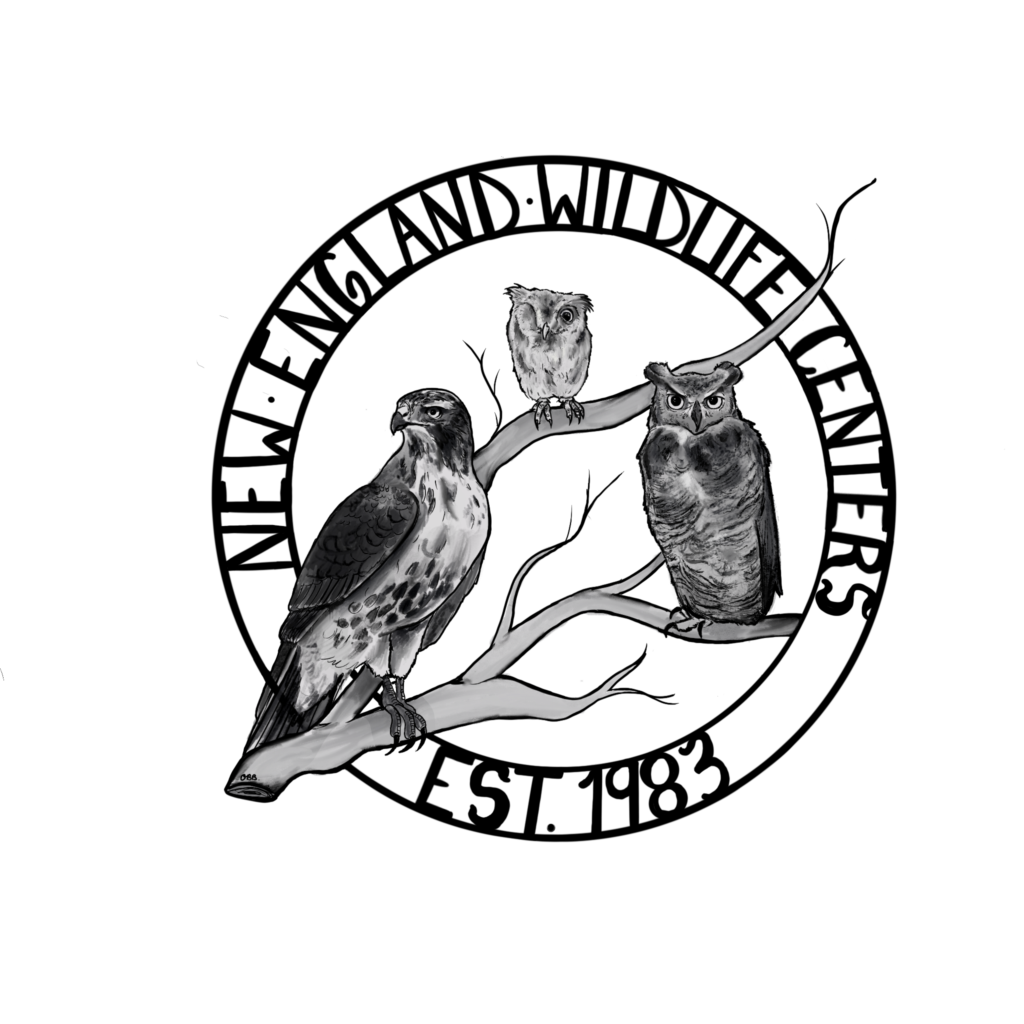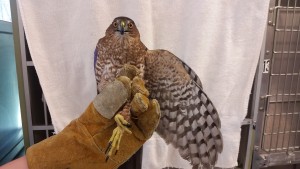This is a Cooper’s Hawk who made his way into New England Wildlife Center last Tuesday. He arrived at our Center weak and unable to fly, with clear signs of trauma to his right wing. After running diagnostics and taking X-rays we found that he not only had a fracture to his ulna, but that he is also suffering from rodenticide toxicity. We believe this injury was caused by being struck by a vehicle. We have since immobilized his wing in a figure-8 wrap and are currently giving him vitamin K to combat the effects of the rodenticide poisoning. Vitamin K1 is an important clotting factor used within a red blood cell’s clotting cascade, without it they are unable to clot. He will continue his regiment of vitamin K for 2 to 3 weeks before we reevaluate his condition. His ulna will take 4 to 6 weeks to heal completely. During this time he will also be given nutritional support and will receive physiotherapy to keep the muscles and ligaments in his wing from becoming too tight. His prognosis is guarded.
This picture of the Cooper’s Hawk provides a great view of his beautiful dark orange eyes. The color of a Cooper’s Hawk’s eyes are a clear indication of their age. They are born with a light blue colored eye, as they progress into the second year of their life their eyes will change to be this orange you see here. This will then darken into a deep red, which is the color they will remain.
Also, If you haven’t already, please check out NEWC’s new GoFundMe campaign. We need your help to raise the money needed to provide transportation to the thousands of students looking to gain access to our facility to learn about biology and nature. Give it a look at: https://www.gofundme.com/jzb5tsfw


